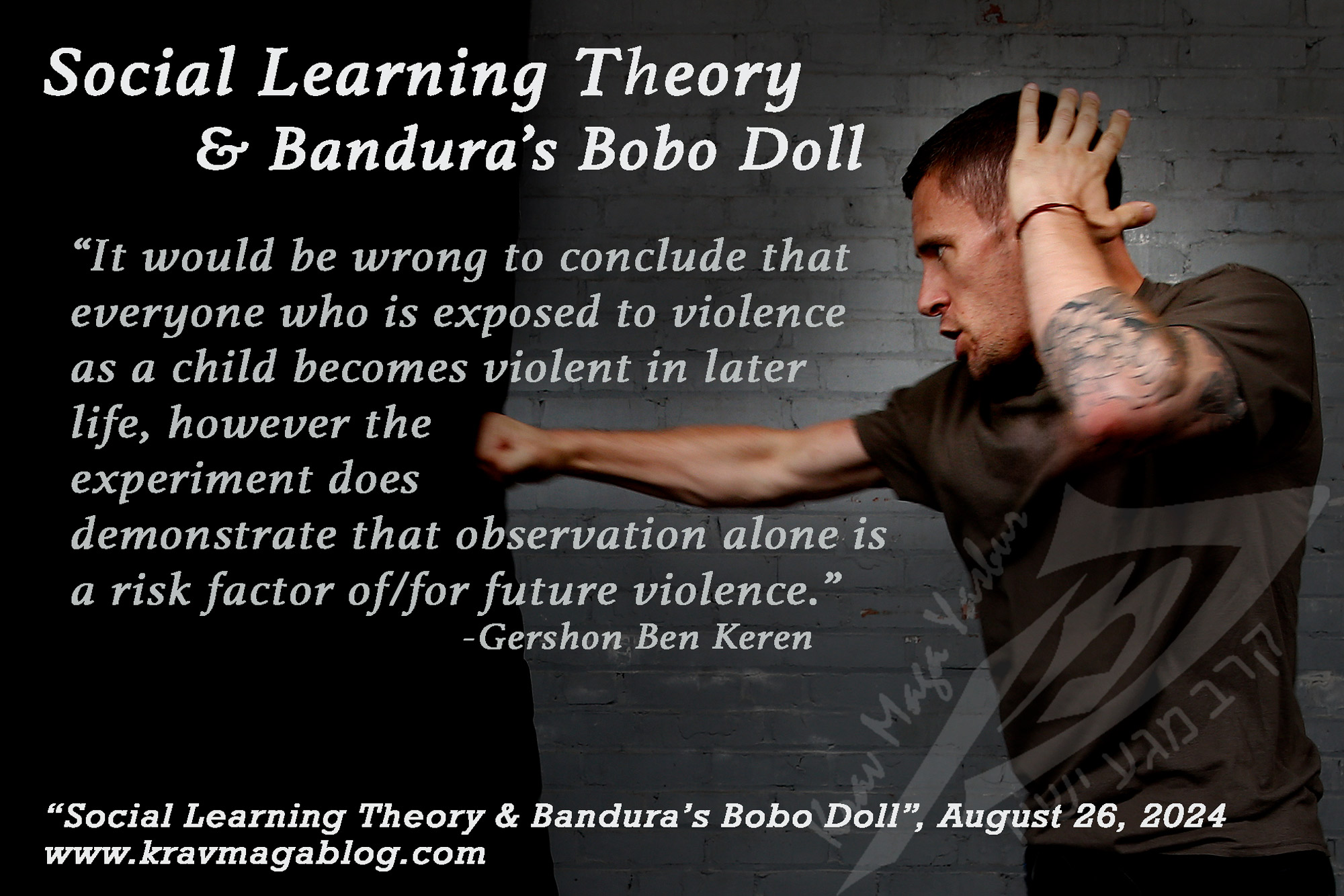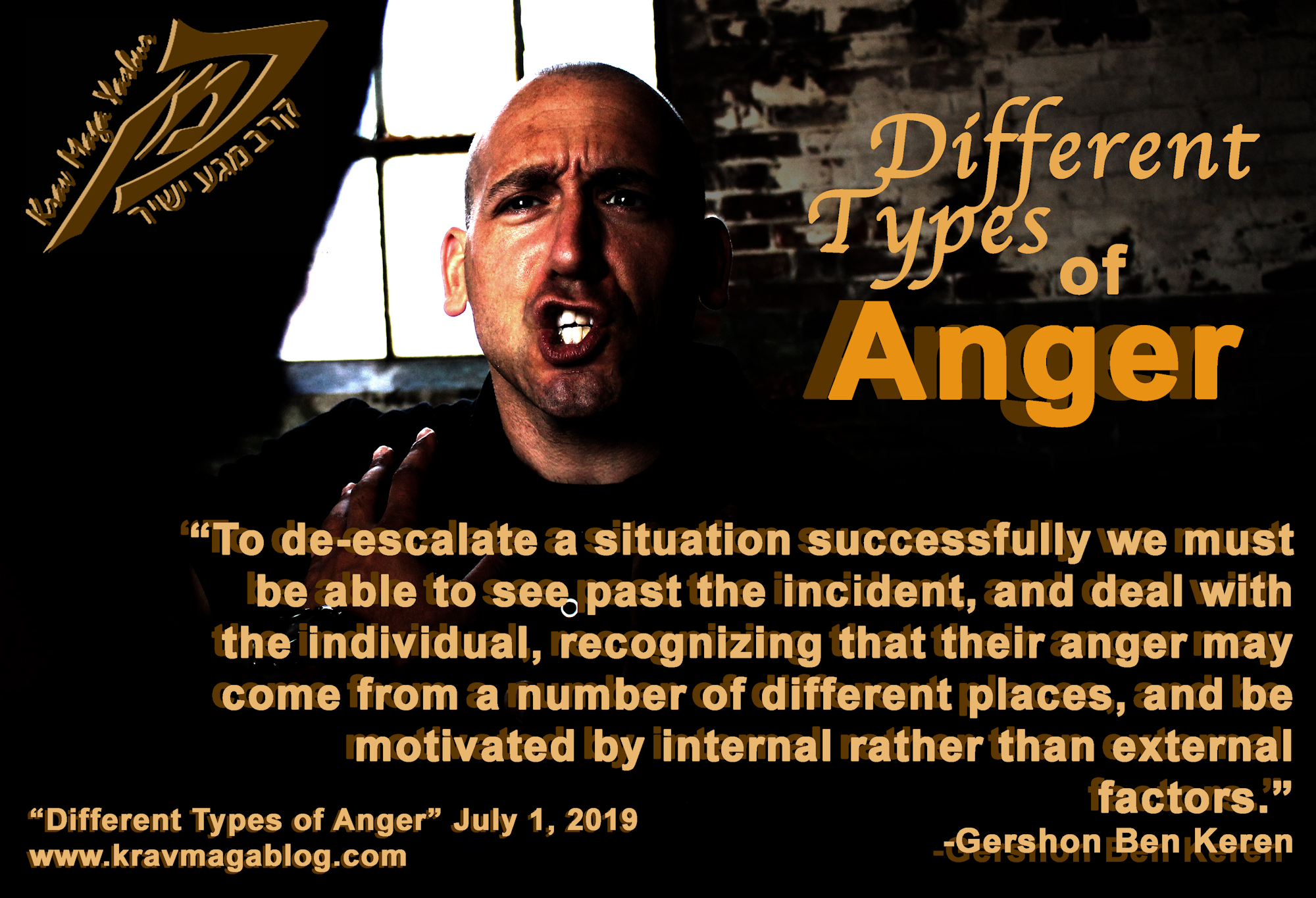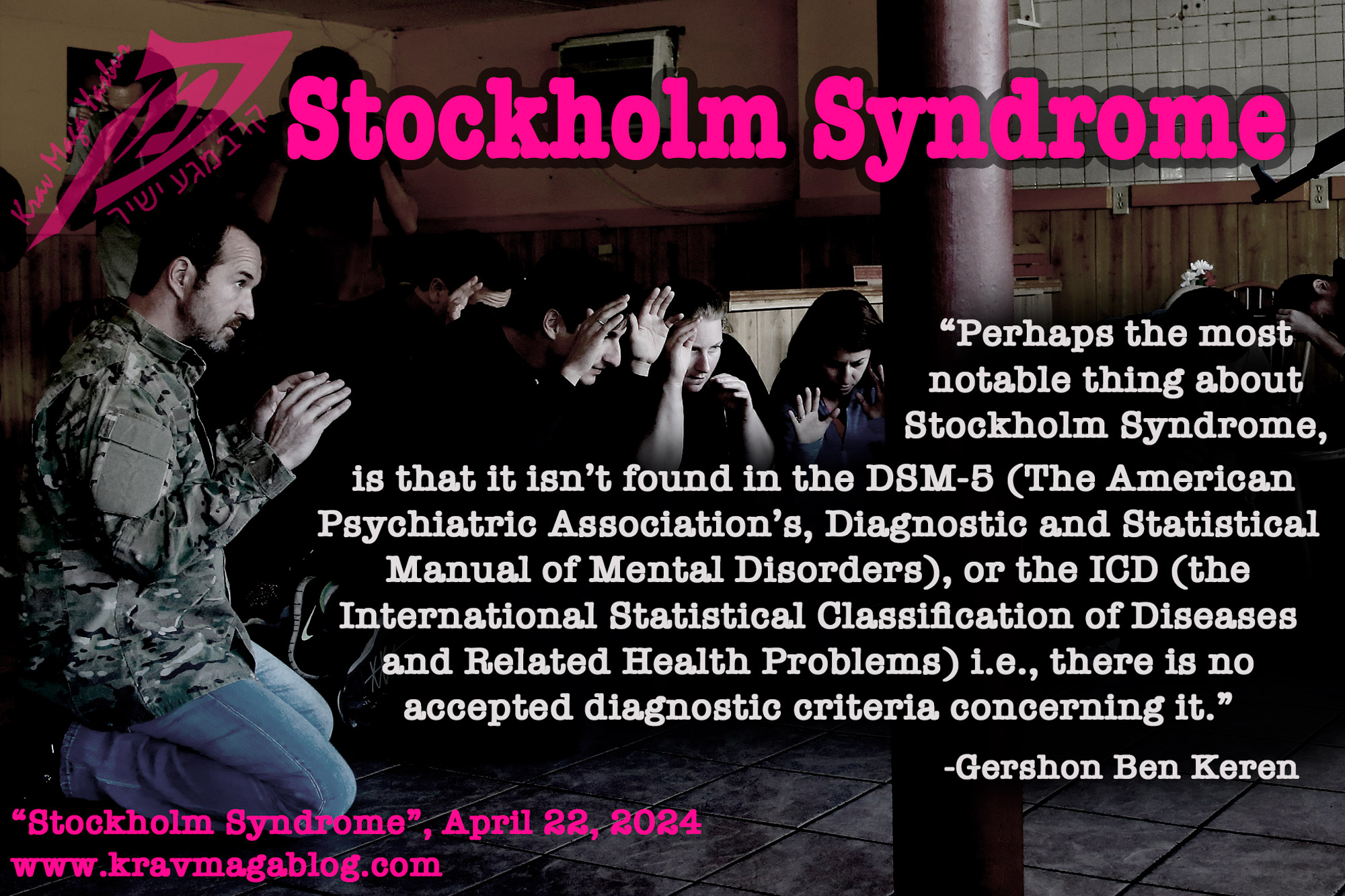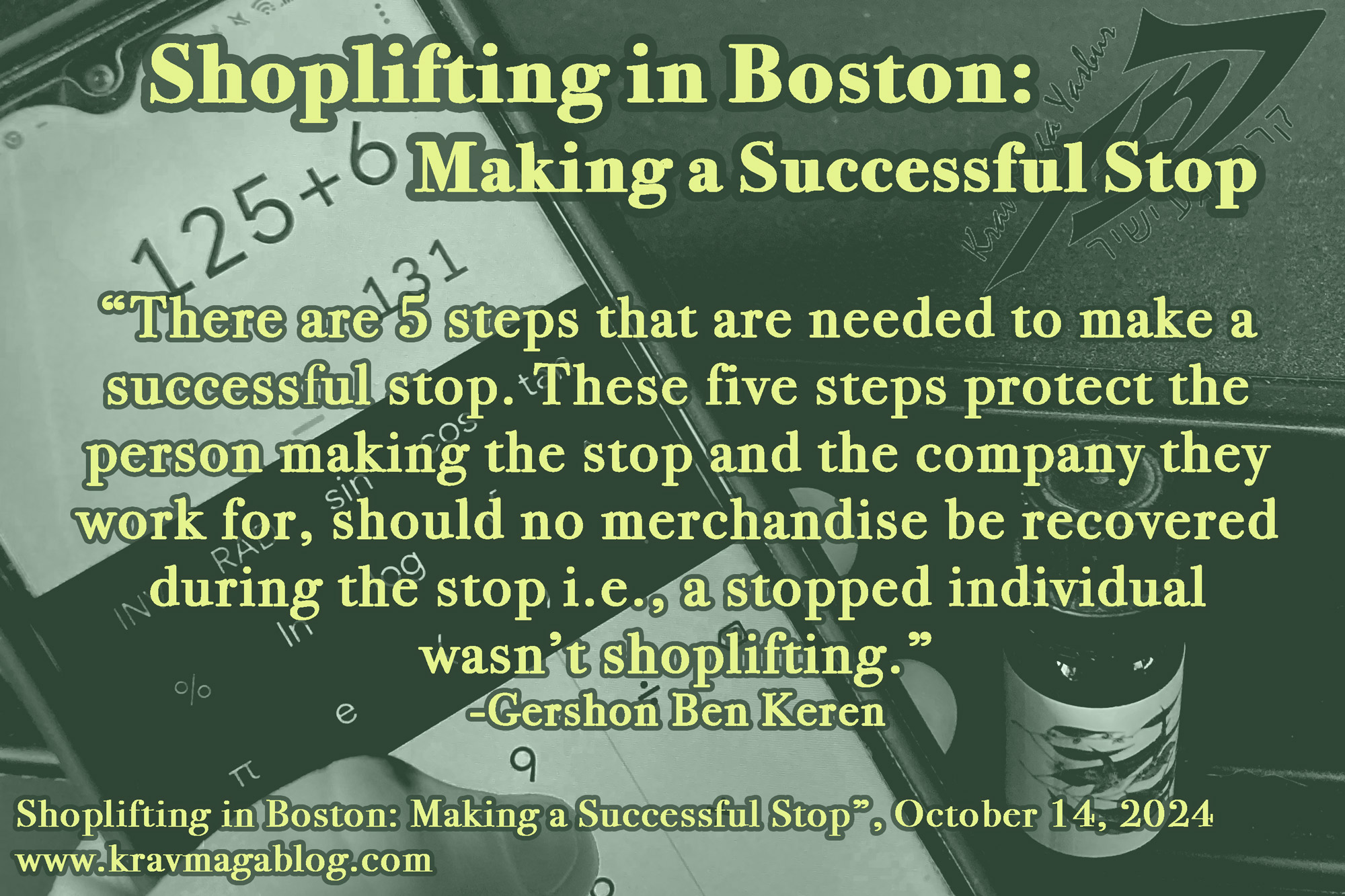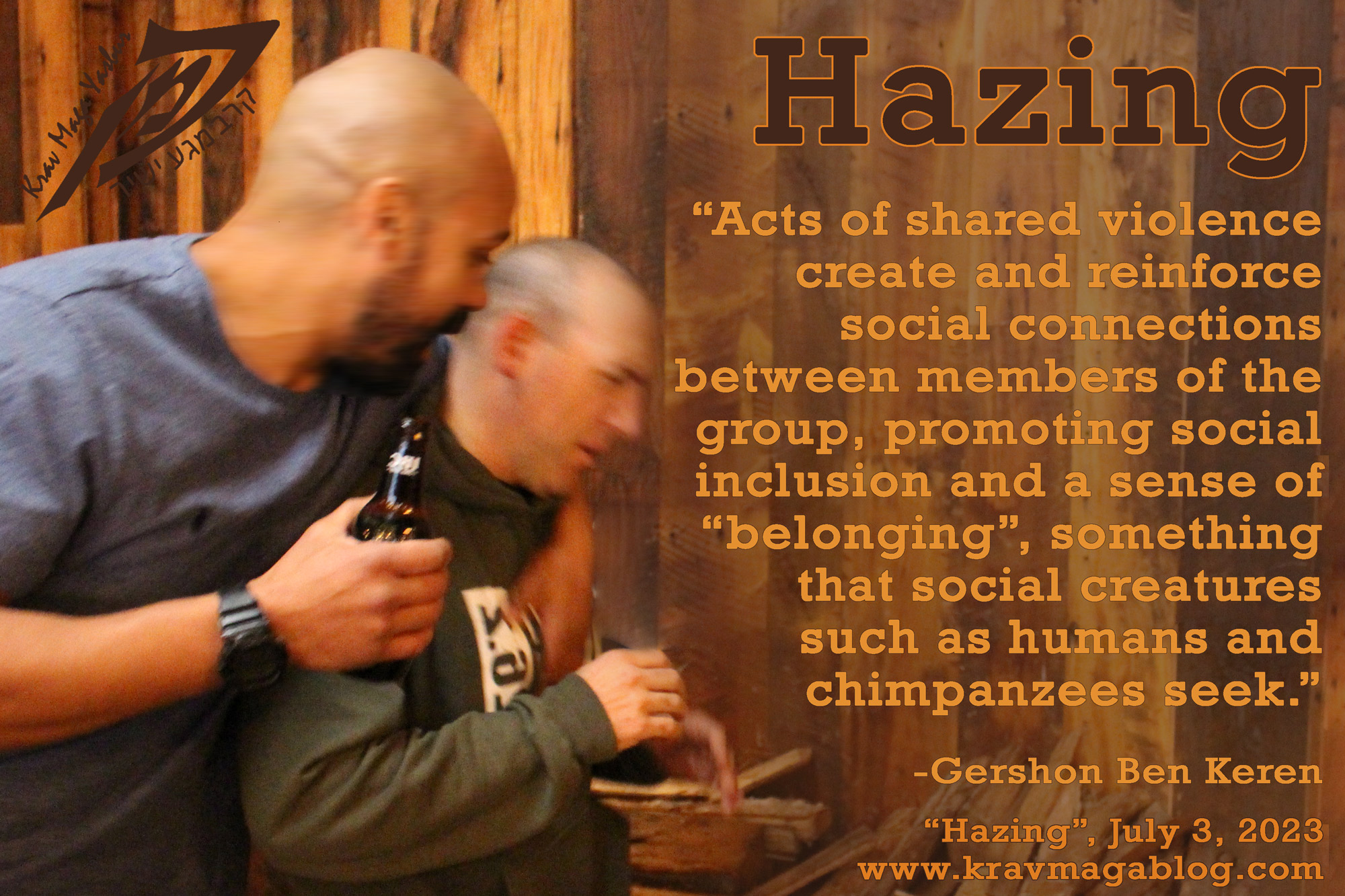Hazing, is an article written by Gershon Ben Keren, a 5th Degree Black Belt in Krav Maga, who teaches Krav Maga in Boston, MA. He has also authored three Amazon best-Selling Books on Krav Maga.
Up until the 1960’s it was thought that chimpanzees were largely vegetarian and somewhat peaceful creatures. It wasn’t really until Jane Goodall’s groundbreaking research into chimpanzees in Gombe Stream National Park (Tanzania), that it was understood that chimps can be highly aggressive - hunting and killing monkeys, committing infanticide, engaging in intra-group conflicts (ganging up against individuals) and even attacking troops/bands of gorillas (considerably larger primates), when in groups. Whilst chimpanzees can be capable of social and mutually beneficial cooperative behaviors, they also at times engage in extreme violence against each other, that not uncommonly involves genital mutilation i.e., forms of sexual violence. That this violence is often committed by groups of chimpanzees who may not as individuals directly benefit from it, shows that involving themselves in such attacks, and acts of aggression benefits them in other ways. Acts of shared violence create and reinforce social connections between members of the group, promoting social inclusion and a sense of “belonging”, something that social creatures such as humans and chimpanzees seek. Chimpanzees share 98% of our DNA, and are genetically closely related to us - they are also the only ape species that actively wages “wars” that are similar to those that humans engage in. Whilst it would be overly simplistic to simply take the actions and behaviors of one species and attribute them to another, there is a benefit in looking at the similarities and parallels between closely related species, and in this article I want to look at the way violence is used to create social cohesion within a group, and specifically how acts of hazing, that are used by certain groups such as college fraternities and sororities, accomplish this same thing i.e. a sense of belonging and social unity.
Often, when football hooliganism is looked at, it’s from the perspective of abnormal social functioning i.e., those who engage in it are maladjusted individuals, who aren’t able to interact and perform in mainstream society etc. However, as more light has been shone on the individuals involved, it has been discovered that there is a significant number of highly successful and professional individuals (senior managers, directors, and city bankers) who trade their weekday office attire on a Saturday afternoon, for their soccer team’s shirt and a pair of jeans, in the hope of “finding” a fight with supporters of a rival team – sometimes these “encounters” are well organized and planned events etc. Whilst it is easy to look at and explain anti-social behavior, as a reaction to frustrations, a lack of economic/social control etc., rarely do simple explanations offer full ones. A 2018 study in Brazil (Newson et al.), that comprised of a survey involving 465 Brazilian football fans found that the major reason for intergroup violence was that of social cohesion/identity fusion i.e., fans bonded with each other when engaging as a group that had a shared identity. Members of a violent group don’t lose their individual identity, they find – or rediscover - a new personal social identity. They become someone in that group. Unfortunately, as a social group, they are more likely to perceive threats to the group than if they were on their own, as there are now potential threats to the social identity they are experiencing and not just to themselves.
Many groups have what could be termed “initiation rituals” for new members, some of which aren’t psychologically or physically harmful e.g., several indigenous peoples have coming of age ceremonies where an individual spends time in solitude and meditation before attending a ceremony that marks their tradition from childhood to adulthood. These are looked on as being positive and welcoming experiences, where the individual involved is meant to come away with a greater understanding of themselves and their community etc. In contrast to this when fraternities, sororities, sports teams, and other groups use hazing as their initiation ritual, only the existing members of the group benefit and have a “positive” experience; albeit an unhealthy one. Regarding sports teams, hazing has been defined as, “Any humiliating, degrading, abusive or dangerous behavior of a junior ranking athlete by a more senior teammate, which does not contribute to the athlete’s positive development, but is required to be accepted as part of a team, regardless of the junior-ranking athlete’s willingness to participate.” (Crow & Mackintosh, 2009). The elements of hazing are clearly stated in this definition, and these are:
- The act(s) and behaviors(s) required to join the group are humiliating and/or dangerous.
- Performing them is the only way to be accepted by, and/or join the group.
- The act(s)/behavior(s) required doesn’t require the participant to be willing.
The only shared power exists between members of the group, and the act of hazing is an expression of the power differential between the group and the person being initiated into it. Team and group members who engage in hazing are using such acts to accomplish two things: 1. They are testing the initiate’s loyalty and commitment to the group (are they willing to humiliate and debase themselves to become a member, just as those engaged in the act of hazing did), and 2. To reinforce the social bonds between existing members of the group. It is perhaps this second element which is the most important aspect of hazing: group bonding. Just as the soccer hooligans gain or regain a social identity in their acts of violence, so do the members of the group, when the group collectively forces the initiate to engage in humiliating and degrading acts. They are reinforcing social bonds with members of the group, sharing an experience that reinforces their in-group status.
Whether it is a chimpanzee war party on a territorial raid against another troop, a group of soccer hooligans searching out a rival team’s fans, or a fraternity putting new pledges through a series of degrading tasks, the social identities of the members of each group are reinforced. In all of these instances the in-group targets members of the out-group, intending to harm and/or make them suffer in some way. Rather than being individuals who become anonymous in the group they find themselves a social identity which they lack when not part of it.
0 COMMENTS
